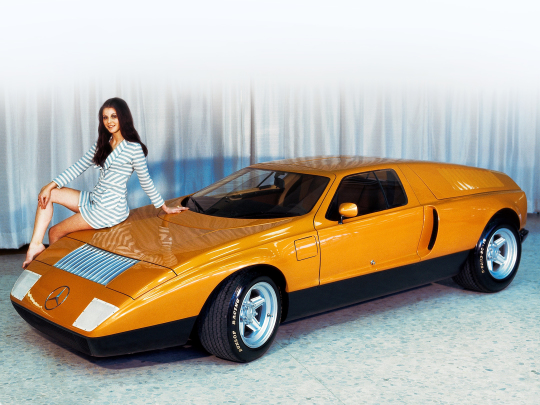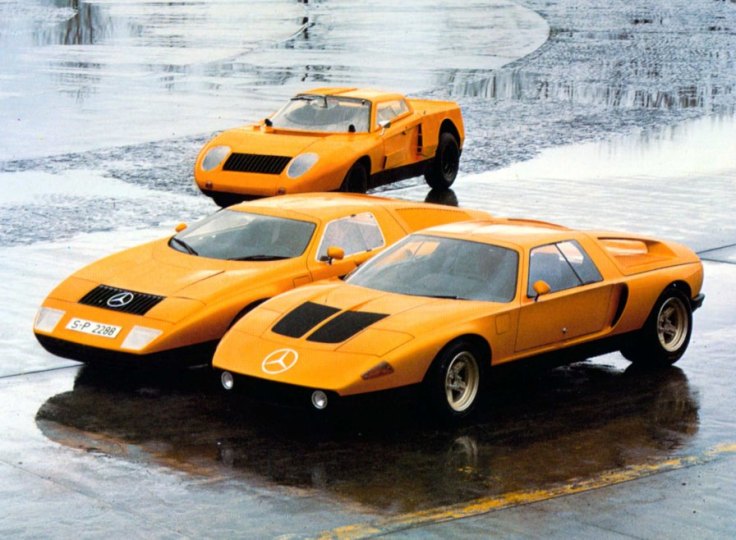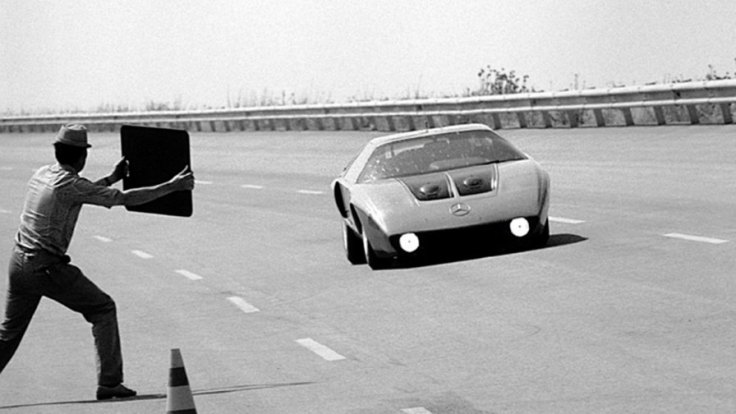Frankfurt, September 1969: expectations were already running high. Rumours had been circulating for quite some time that Mercedes-Benz was planning to launch a sensation at the International Motor Show (IAA) in Frankfurt. But the car finally unveiled by the Stuttgart manufacturer surpassed even the wildest expectations. What the journalists got to see was a super sports car with gullwing doors and a Wankel rotary engine. It was a research vehicle that quickly became the absolute dream car of the 1970s.

Engineering and design
Dr. Felix Wankel was working alongside NSU at this time who had taken the necessary precautions during this time to secure the patents for the rotary engine and sell the the concept to other companies. Eventually seven companies including Toyo Kogyo in Japan, Citröen in France, and Mercedes would take up this offer – we go into the history of the rotary engine more in a previous feature. Although Mercedes’ own tests with a twin-rotor showed promise, it would have saved millions in licensing fees had it taken up the project in the 1930s when Dr. Wankel worked on his concept for rotary engines and valves for military purposes while working for the company.
One of the stipulations of the rotary engine contract was that the company had to put the car into some form production or pay a substantial fee. To avoid this, Mercedes did what it normally never does and made its prototype car public at the Frankfurt motor show in 1969. The press and public were shocked by the radical wedge-shaped design, fibreglass body, gullwing doors and striking burnt orange paint from a company often perceived as staid and conservative.

Its engineering lived up to the promise of Bruno Sacco’s futuristic styling. Both the C111-I of 1969 with its three-rotor 1.8-litre Wankel engine (280 PS/206 kW) and the C 111-II of 1970 with four-rotor 2.4-litre Wankel engine (350 PS/257 kW) impressed with their effortlessly superior driving performance. Delivering top speeds of 270 and 300 km/h respectively, the C 111-II could accelerate from a standing start to 100 km/h in 4.9 seconds thanks to the additional low-down torque provided by the additional rotor. Yet even when the Mercedes-Benz engineers pushed the Wankel engine to the very limits of its design, the result did not meet the high standards of Mercedes-Benz in terms of reliability and durability. The more stringent emissions legislation in the United States was also to prove an added complication.
But it was not only the disadvantages of the rotary engine that ultimately led to the decision not to proceed further with series production of the C 111. By the early 1970s, passive safety was becoming a more and more important factor in automotive development. The plastic body-shell of the C 111 had an inherent disadvantage in this respect, compared with a conventional sheet steel body. And so it was that, in 1971, Mercedes-Benz made the decision not to move forward with series production of the sports car. The dismay among automobile enthusiasts was considerable. More than one such fan had taken a punt and submitted an order to the plant at Untertürkheim, along with a blank cheque – however all blank cheques that they received from wealthy enthusiasts were returned and it was made very clear that the C111 mobile test bed would never reach production.
Second Career as a Record-Setter

In 1978 at the Nardo test track in Italy between 29th & 30th April, a Mercedes-Benz C111-III with a diesel engine producing 230 PS (169 kW) and a team of test drivers established the following nine average speed and distance records for a diesel-engined car:
- 100 kilometres at 316.40 km/h (196.61 mph)
- 100 miles at 198.72 mph (319.80 km/h)
- 500 kilometres at 321.80 km/h (199.96 mph)
- 500 miles at 199.28 mph (320.70 km/h)
- 1,000 kilometres at 318.30 km/h (197.79 mph)
- 1,000 miles at 192.28 mph (309.44 km/h)
- 1 hour at 319.80 km/h (198.72 mph)
- 6 hours at 317.80 km/h (197.48 mph)
- 12 hours at 314.39 km/h (198.36 mph)
Infuriatingly just short of the magic 200 mph, they returned a year later on 5th May 1979 with a Mercedes-Benz C111-IV boasting a twin-turbocharged version of the 4.8-litre V8 petrol engine from the 450 saloons producing 500 PS (368 kW) . The team of drivers set out to break the record set by the Porsche 917 of 356 km/h (221 mph) – they established an unofficial closed circuit record of 403.90 km/h (250.98 mph) over a single lap and covered 100 miles at an average of 367.236 km/h (228.196 mph).

We did a previous “Top Eleven” feature of 11 production cars with gullwing doors and deliberately omitted the C111 from the honourble mentions in favour of the Porsche Tapiro so that we could do this feature in the future.
I hope you enjoyed it and would love to get your feedback – reach out through one of the social media channels and let me know what you think!


Leave a comment